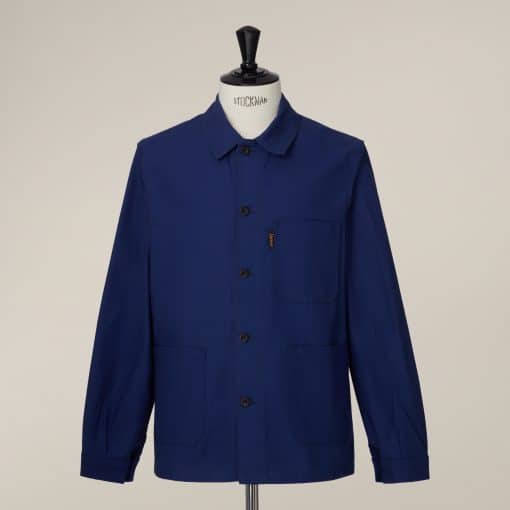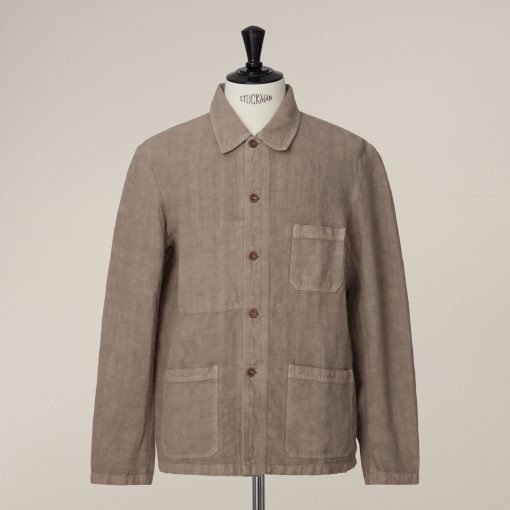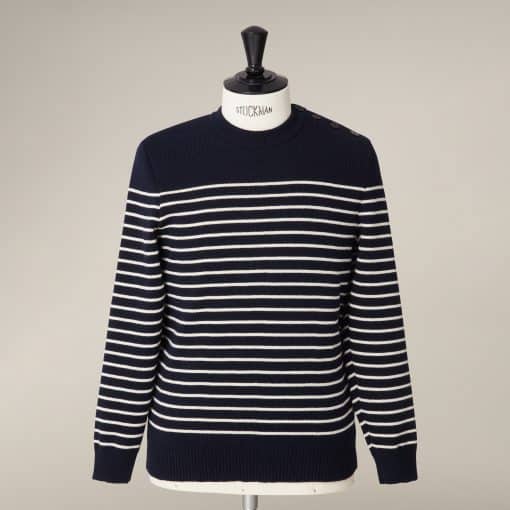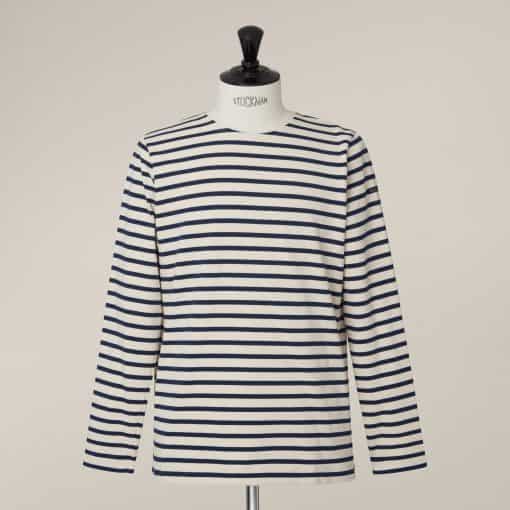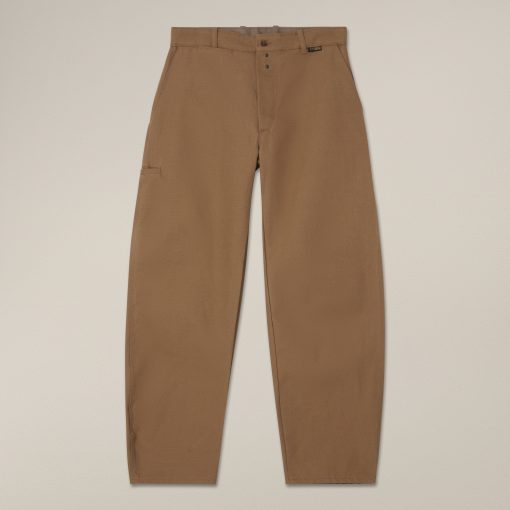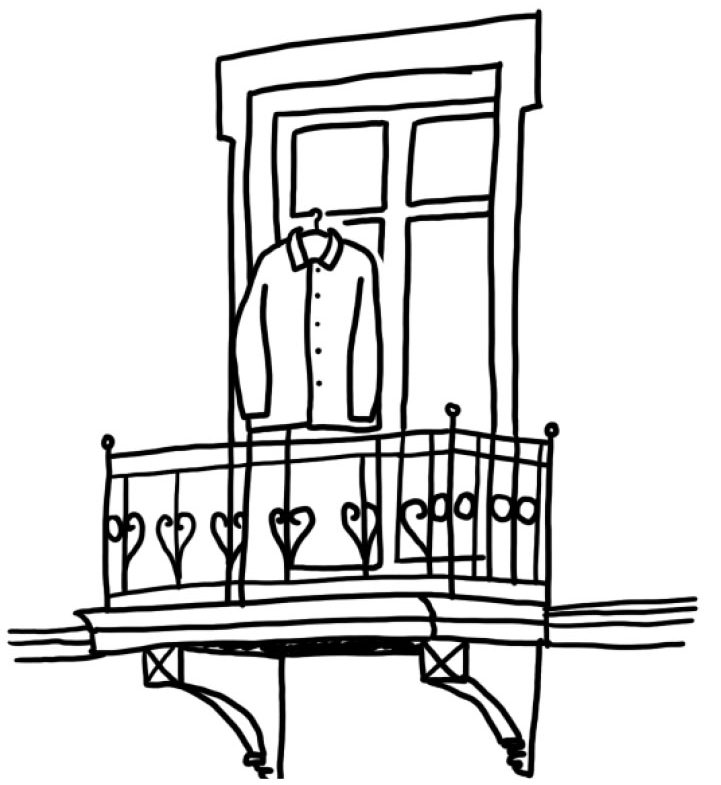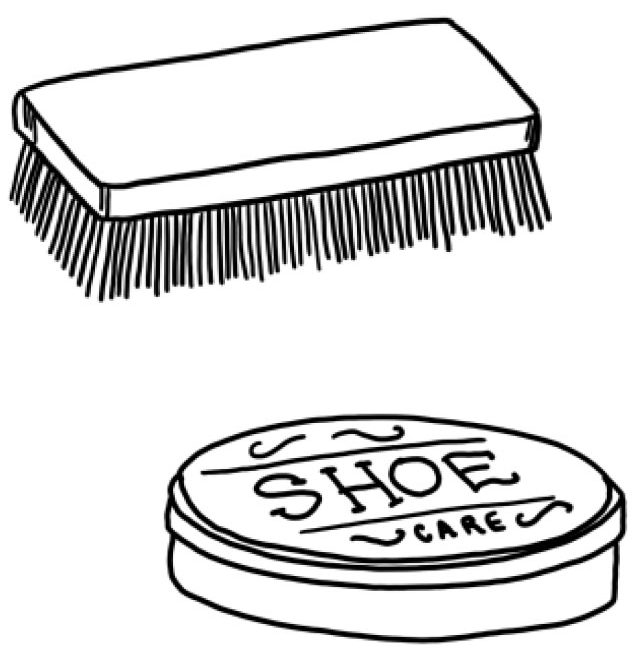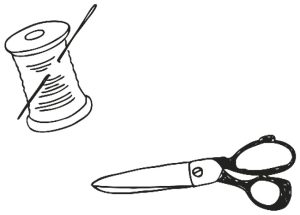Sustainable care for your French workwear
French workwear originated in the factories and were meant to keep you warm, safe and dry every day at work. That’s why they are usually made from hard-wearing and natural materials like cotton drill, moleskin, linen, and wool. But while French workwear is made for a rough life, they will last even longer and age with personality if you take good care of them. That’s a good thing not only for your clothes budget, but also for the planet.
Wear often. Wash seldom
About 25% of a garment’s carbon footprint comes from after you’ve bought it, mostly from washing. Today it’s common to wash your clothes after only one wear – and almost always at higher temperatures than is needed. This shortens the lifespan of the garments, and can cause fading, shrinking, and twisting. Washing is much harder on your clothes than wearing them.
In the past, washing was expensive and hard work. But everyone knew the simple everyday tricks and habits that would keep your clothes looking and feeling nice and fresh in between washes.
Everyday care

- Shaking and airing
Change you clothes when you come home and let them rest. Give them a shake, both the right way out and turned inside out to get rid of loose dust and dirt. Then hang them outside over the night. This relaxes the fibres and allows them to release moisture and smell. - Brushing
Buy a soft clothes brush and brush down your clothes a few times a week. This will loosen and remove particles caught in the weave. It also aligns the fibers and reduces wrinkling. - Spot cleaning
Spots are inevitable. But the sustainable principle is “clean the spot, not the whole garment”. Brush the spot. Then gently rub it with a dry microfibre cloth. Dampen the microfibre cloth with water (and perhaps a little soap) and work at the spot from edge to center. Then gently pat with a dry microfibre cloth. This will almost always remove the spot – no washing needed! - Steaming
Steaming is a great way to freshen up a shirt, a sweater or a jacket. The steam relaxes the fibres, smoothes wrinkels and leaves the garment smelling fresh. If you don’t have a steamer (a simple one isn’t very expensive), hanging your clothes in the bathroom while you take hot shower will also do the trick.
Washing
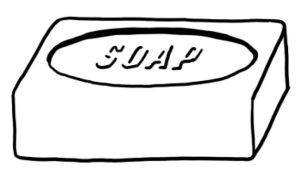
90% of the energy used by a washing machine goes to heating the water. One single 60° wash equals five washes in 30° – which is almost always enough to get your clothes clean.
The washing temperature on your garment’s label is the maximum recommended temperature. Any washing temperature below that is OK and always gentler on your clothes.
Use a mild, biodegradable detergent. And don’t overdose – this will not get your clothes cleaner. In fact, if you over-dose detergent it is harder to rinse out and will stay in your clothes. This increases the wear on the material and can cause skin irritation. Modern detergents are fantastically effective. Try using half the amount recommended on the packaging – you’ll be surprised at how clean your clothes still get!
Always wash your clothes turned inside out. And don’t over-fill the machine when washing heavy workshirts, workjackets or pants in cotton drill, moleskin, or denim. This increases the risk for streaking since the clothes will be more tightly folded in the drum. Tight folds are more exposed to abrasion in the machine and can therefore lose color more quickly.
Gently stretch the garments, especially the seams, after washing, and always hang your clothes to dry. Tumble drying not only uses a lot of energy – it also works as sandpaper on your clothes, making them thinner and weaker every time. The lint caught in the tumbler’s filter used to be your clothes.
Mending
Mending holes and rips used to be a natural part of a garment’s lifecycle. But today most of us lack the knowledge and skills to mend and patch. But that’s where your neighborhood tailor comes in – they are important warriors in the fight against fast fashion!
We are often amazed by the repairs of an experienced tailor – often you can’t even tell something has been mended. And when you can, it always adds personality and patina to the garment. Lovingly used and mended workwear is highly sought after by workwear afficionados and can actually be worth more than new.
.
Footwear care
Wipe down your shoes every day. The accumulated dust and dirt on your shoes will act as an abrasive, shortening their lifespan.
Try not to wear the same shoes two days in a row. This helps them to get rid of moisture. Resting the shoes with wooden shoe blocks inside will help your shoes to keep their shape and reduce creases.
Every now and then – clean and shine your shoes. Always use high-quality fats and shine – but be careful not to use too much, since that can dissolve threads and glues over time. Shiny, but not sticky is what you should be going for.
Cotton
 Cotton is the world’s most used textile fiber, made from the fluffy protective cover of the cotton seed. Depending on the weave, cotton is soft, breathable, hypoallergenic, and durable. Cotton production requires a lot of water and energy. But most of the energy goes into caring for the cotton garment. Air-drying instead of tumble drying can reduce the carbon footprint of cotton by 1/3.
Cotton is the world’s most used textile fiber, made from the fluffy protective cover of the cotton seed. Depending on the weave, cotton is soft, breathable, hypoallergenic, and durable. Cotton production requires a lot of water and energy. But most of the energy goes into caring for the cotton garment. Air-drying instead of tumble drying can reduce the carbon footprint of cotton by 1/3.
Linen
 Linen is made from flax fibers and is one of the oldest textiles known. It’s also the only vegetable fiber native to Europe. Linen is hard-wearing, dirt-resistant, absorbent, fast-drying and feels cool to the touch, making it a preferred textile for warm climates. It wrinkles easily, which is part of its relaxed personality. Linen clothes should not be tumble dried and are easier to iron when still damp.
Linen is made from flax fibers and is one of the oldest textiles known. It’s also the only vegetable fiber native to Europe. Linen is hard-wearing, dirt-resistant, absorbent, fast-drying and feels cool to the touch, making it a preferred textile for warm climates. It wrinkles easily, which is part of its relaxed personality. Linen clothes should not be tumble dried and are easier to iron when still damp.
Wool
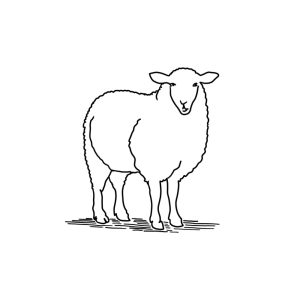 Wool is an animal fiber obtained from sheep, goats, yak and many other furry animals. Wool fibers consist of protein (keratin) and fats, and not cellulose like cotton.
Wool is an animal fiber obtained from sheep, goats, yak and many other furry animals. Wool fibers consist of protein (keratin) and fats, and not cellulose like cotton.
Wool is self-cleaning because of the keratin fibers, which help to break down smell-causing bacteria and also because the wool core contains fibers of two different thicknesses, which are constantly in motion friction – creating a mechanical, self-cleaning effect. Because of this, wool does not need cleaning very often. Just turn the garment inside out, shake it and leave it out to air when you have worn it.
Wool is sensitive to heat and should always be washed inside out by hand or on wool cycle with special wool detergent to avoid shrinking. Dry flat at room temperature.

